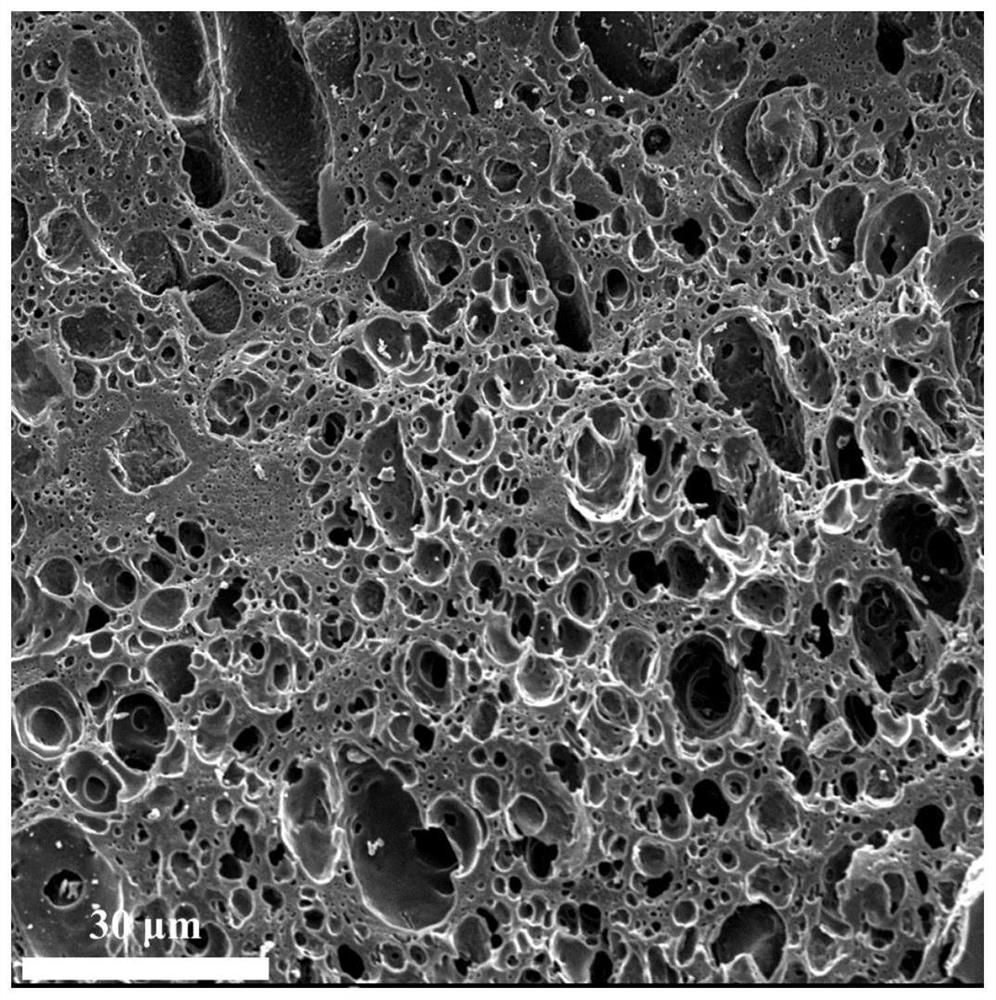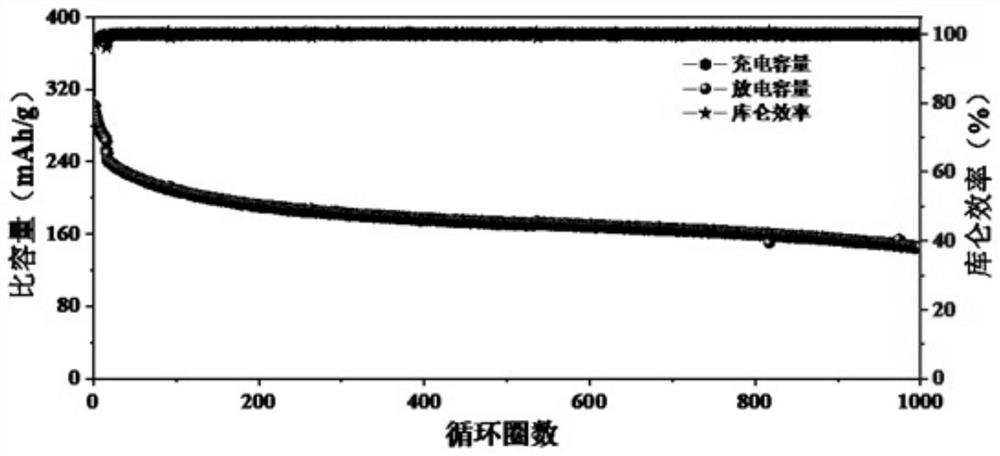Ordered porous hard carbon for sodium ion battery
A deionized water and carbon electrode technology, which is applied in battery electrodes, secondary batteries, circuits, etc., can solve the problems of electrolyte decomposition and first-efficiency reduction, and achieve good film-forming properties, increased utilization rate, and excellent sodium storage capacity and the effect of rate performance
- Summary
- Abstract
- Description
- Claims
- Application Information
AI Technical Summary
Problems solved by technology
Method used
Image
Examples
Embodiment 1
[0037] Step (1): Weigh 4g of polyacrylonitrile (PAN), dissolve it in 36g of N,N-dimethylformamide (DMF) at room temperature, and keep stirring for 8h until it is completely dissolved.
[0038] Step (2): Add 8 g of polyvinylpyrrolidone (PVP) to the above liquid, and continue to stir for 4 hours until completely dissolved.
[0039] Step (3): Put the above liquid in an oil bath, stir and react at 80° C. for 9 hours until the sol-gel is complete.
[0040] Step (4): The glue solution is evenly dripped onto a PTFE mesh mold with a size of 40mm×40mm×1.5mm.
[0041] Step (5): The PTFE mold with the gel film was immersed in deionized water at 70° C. for phase separation, and this step was repeated until the deionized water was no longer turbid.
[0042] Step (6): Carbonize the porous polymer film obtained by removing the mold from (5) in a tube furnace, control the heating rate at 3°C / min until the carbonization temperature is 1200°C and keep for 2h.
[0043] Step (7): further pulver...
Embodiment 2-4
[0047] The PVP addition amount in step (2) of embodiment 1 is changed into 0g, 4g and 12g respectively, thereby carried out embodiment 2-4 successively, other are all unchanged.
[0048] Table 1 shows the specific surface area and performance of the sodium-ion battery of the hard carbon materials prepared in Examples 1-4.
[0049] Table 1
[0050]
[0051]
Embodiment 5-9
[0053] The PAN in the step (1) of embodiment 1 is changed into polyvinyl butyral (PVB), polyvinyl alcohol (PVA), polyvinylidene fluoride (PVDF), polytetrafluoroethylene (PTFE) successively, other are unchanged.
[0054] Table 2 shows the specific surface area and performance of the sodium ion battery of the hard carbon materials prepared in Examples 5-9.
[0055] Table 2
[0056]
PUM
| Property | Measurement | Unit |
|---|---|---|
| thickness | aaaaa | aaaaa |
Abstract
Description
Claims
Application Information
 Login to View More
Login to View More - R&D
- Intellectual Property
- Life Sciences
- Materials
- Tech Scout
- Unparalleled Data Quality
- Higher Quality Content
- 60% Fewer Hallucinations
Browse by: Latest US Patents, China's latest patents, Technical Efficacy Thesaurus, Application Domain, Technology Topic, Popular Technical Reports.
© 2025 PatSnap. All rights reserved.Legal|Privacy policy|Modern Slavery Act Transparency Statement|Sitemap|About US| Contact US: help@patsnap.com



